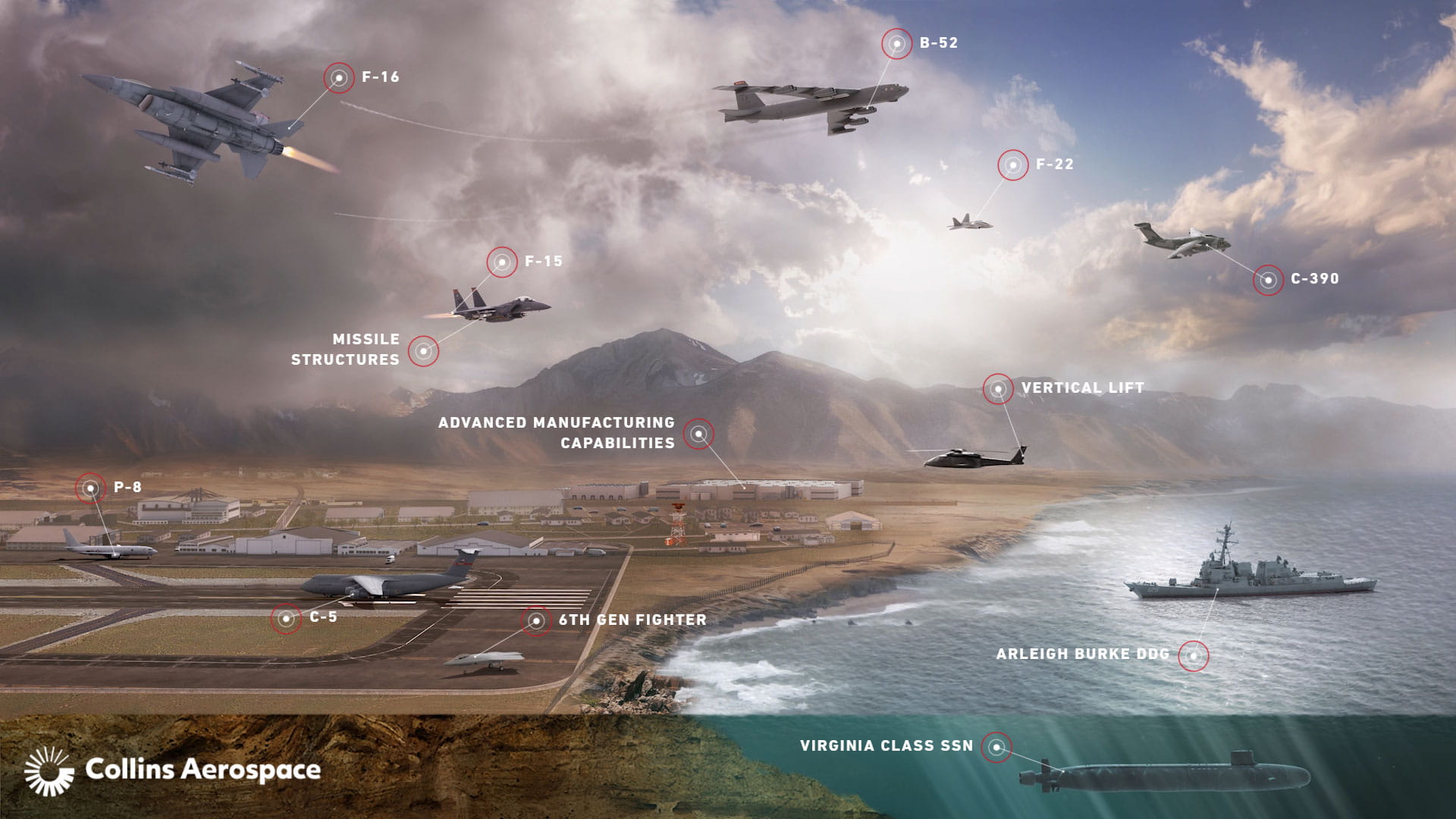At Collins Aerospace, we’re redefining aerospace and making what seems impossible come to life. Together, through collaboration with our military customers and OEM partners, we’re making more possible with our military flight control surfaces.
Through a number of advanced technologies, including aluminum GRID-LOCK®, out-of-autoclave thermoset and thermoplastic composite manufacturing processes, we’re developing flight control surfaces that make aircraft lighter – enabling faster mission speeds and reduced fuel burn; and stronger – reducing maintenance and life cycle costs.
Redefining Mission Performance in the Air and at Sea
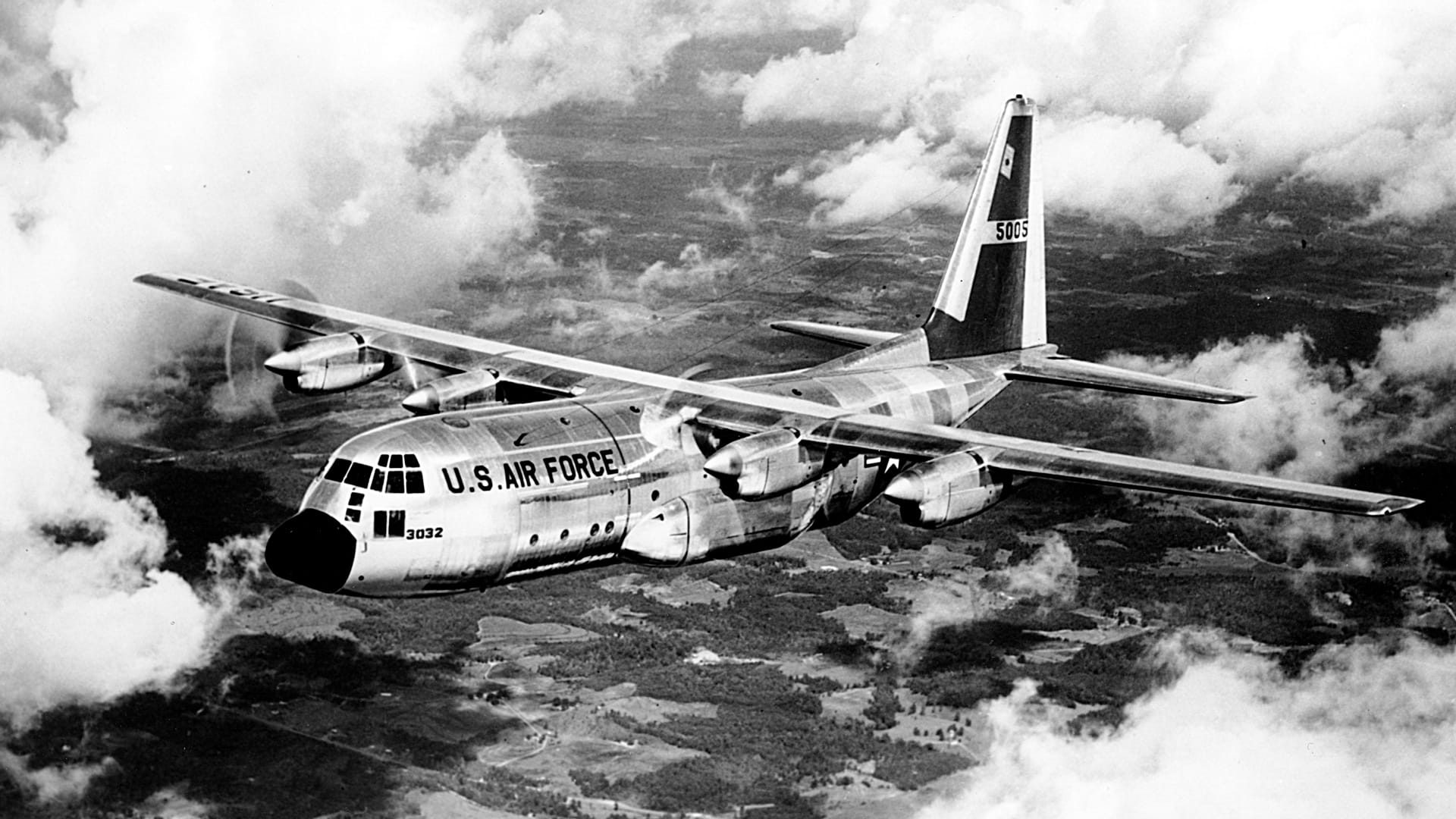
We have more than 18,000 GRID-LOCK components in service, which include both primary and secondary flight control surfaces.
Surfaces include:
- Flaps
- Ailerons
- Landing gear doors
- Vertical stabilator leading edges
- Horizontal stabilator leading and trailing edges
- Wing tips
- Missile wing/fins
GRID-LOCK Technology
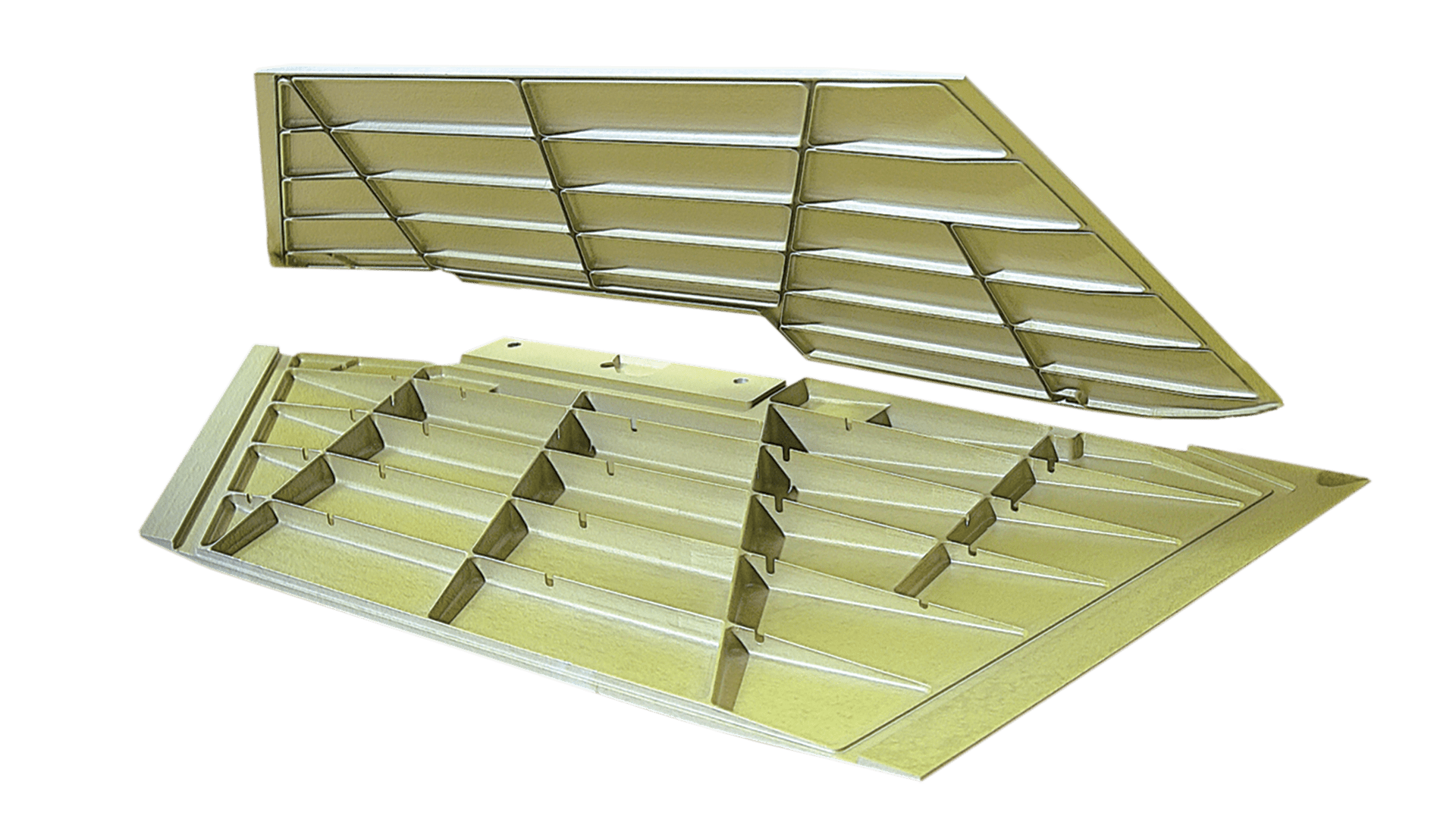
Collins GRID-LOCK technology provides customers with lightweight, low-cost, durable structures to improve performance of their military aircraft. Our state-of-the-art manufacturing processes deliver integrated structural solutions that improve temperature and structural capabilities.
With GRID-LOCK, we can adhesively bond machined components with simple tongue and groove joints. This leads to flight control surfaces that are stronger and more resistant to corrosion than conventional methods. And repairing these components is even easier, leading to a far superior service life on aircrafts.
Resin Pressurized Molding (RPM) Technology
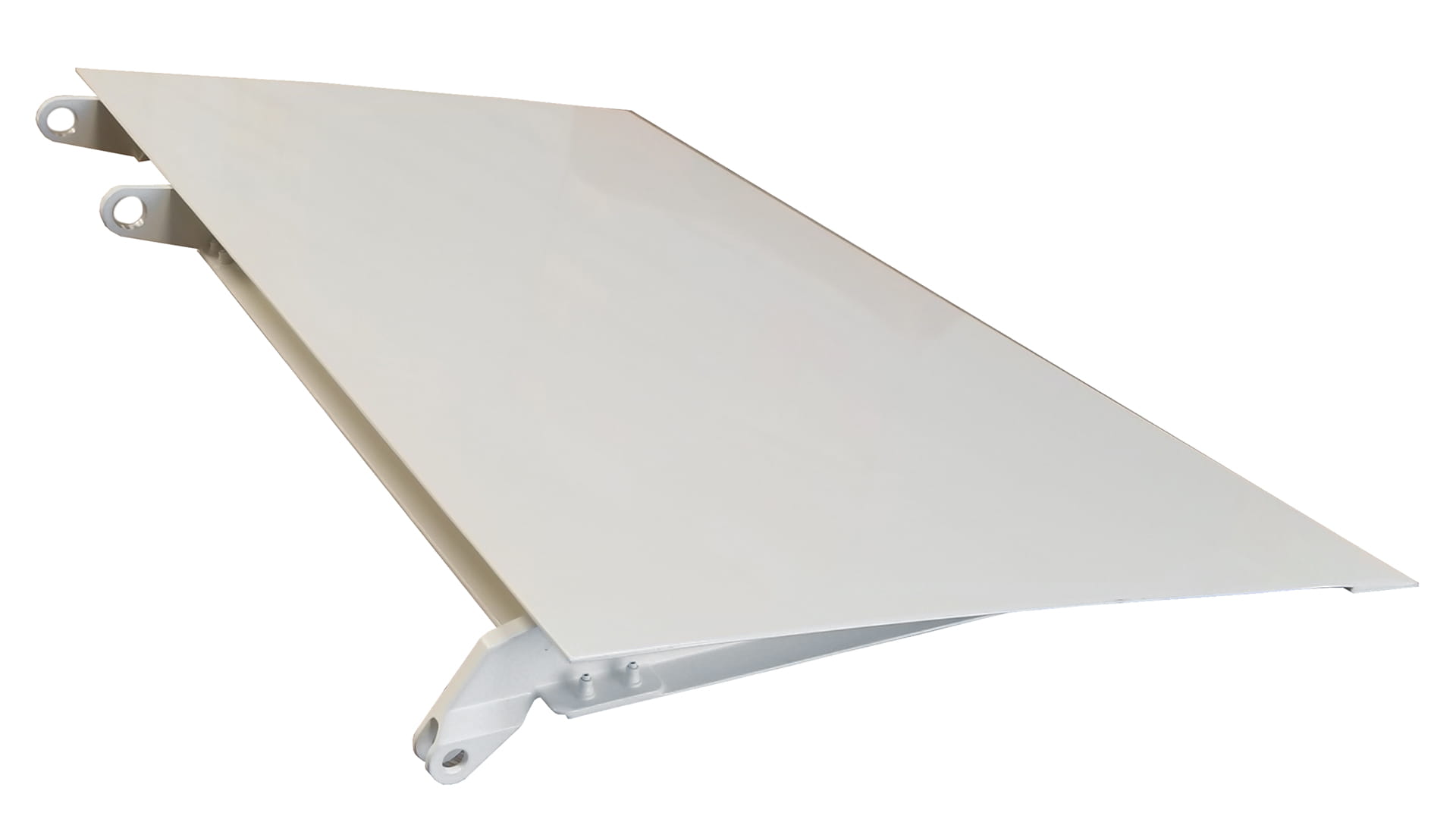
For 25 years, the evolution of flight control surfaces has continued on a path of incorporating modern technology. Collins out-of-autoclave RPM technology delivers fully-tooled, near-net shaped parts with integral skin and ribs. This process affords structures that are lighter weight with less parts, corrosion free and more durable than GRID-LOCK technologies. Products that use RPM technology are also more ballistic tolerant than other materials.
RPM is ideal for flight control surfaces, doors and ramp structures as it eliminates up to 80% of fasteners and all secondary bonds while providing a near-net finish. RPM is currently in use on F-16 horizontal stabilators.
Thermoplastic Technology
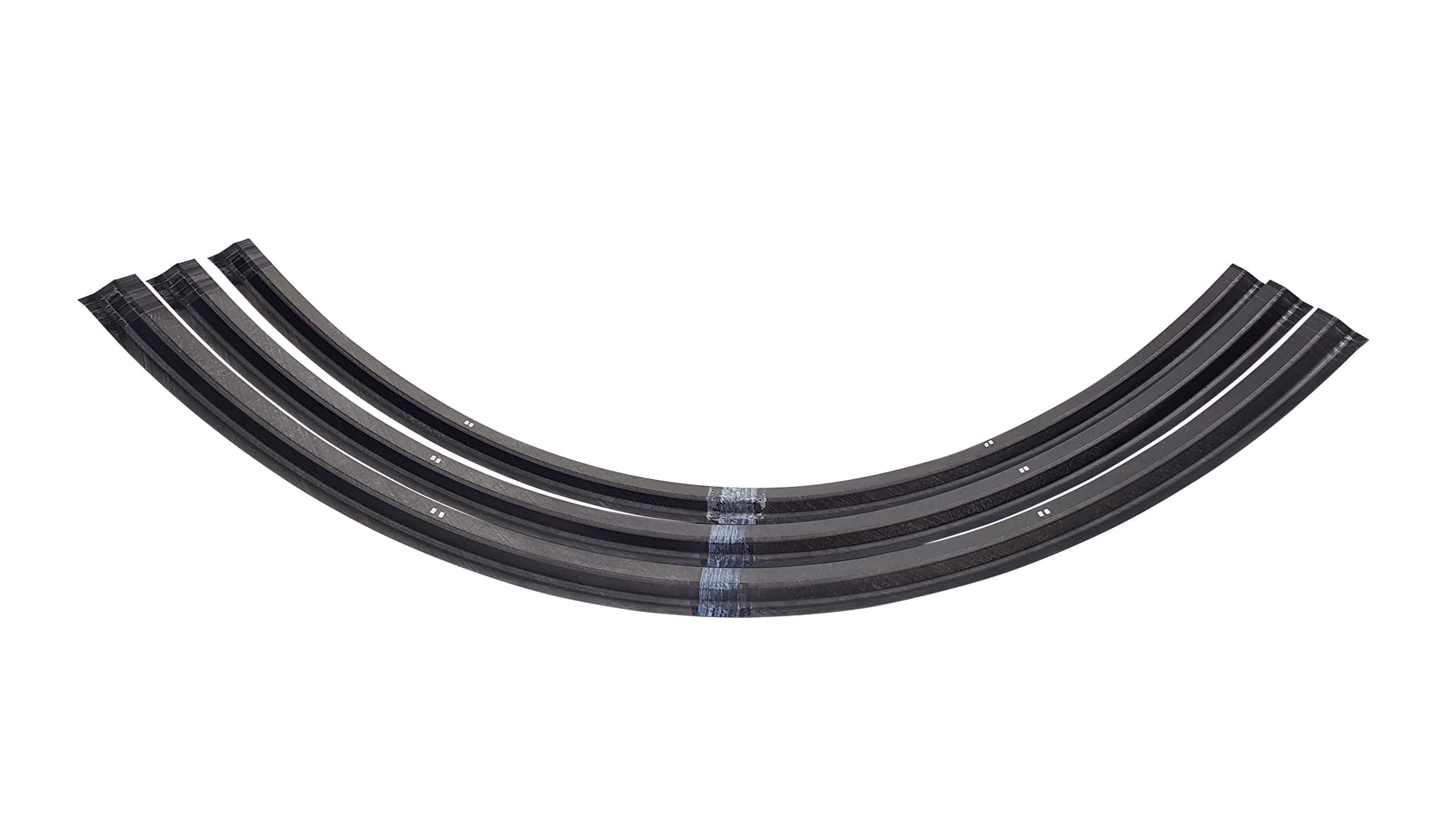
The use of thermoplastic materials to improve aircraft performance, delivery rates and product durability is on the rise in the aerospace industry. Using these materials removes the need for previous metallic structures and opens the door for structures that are more environmentally friendly.
Collins is at the forefront of these material advancements, providing products that are more damage tolerant over thermosets, flexible and easily reformed to meet any shape needed. Our process of combining automation and machinery allows us to deliver products to customers faster than ever before.
Today, Collins is developing capabilities in stamp forming, large skin automated fiber placement (AFP) and welding for large thermoplastic structures.
Thermoplastics are making a significant change in the aerospace industry, as they are now more durable and resist corrosion better than traditional composites. Products born of metal can now be replaced with composites, aiding in reduced weight and increased fuel efficiencies. More importantly, the unique properties of thermoplastics offer superior corrosion and fatigue resistance, as well as undeniable tensile strength, which all prove to outperform metal and thermoset composite predecessors.


